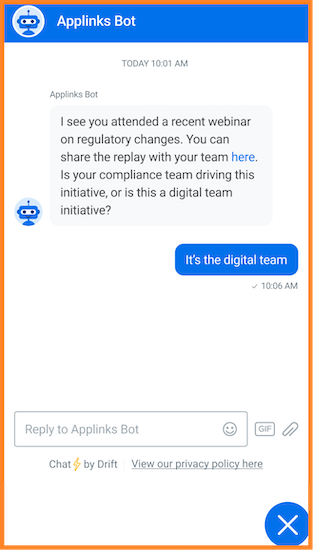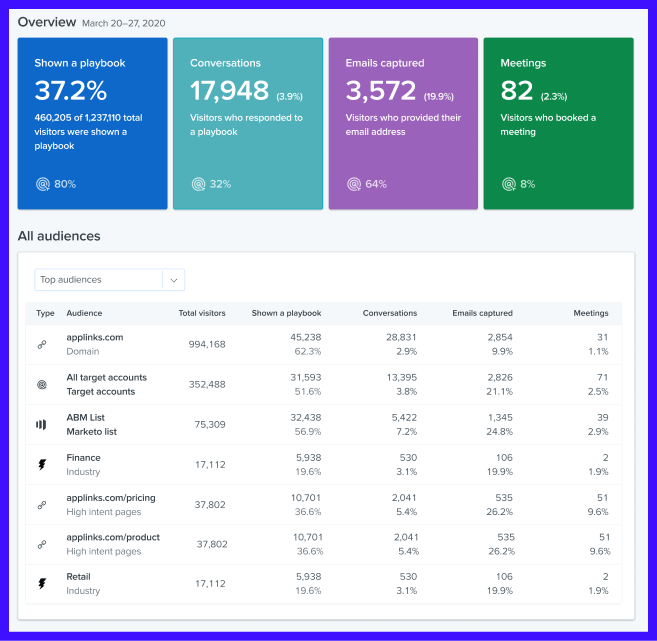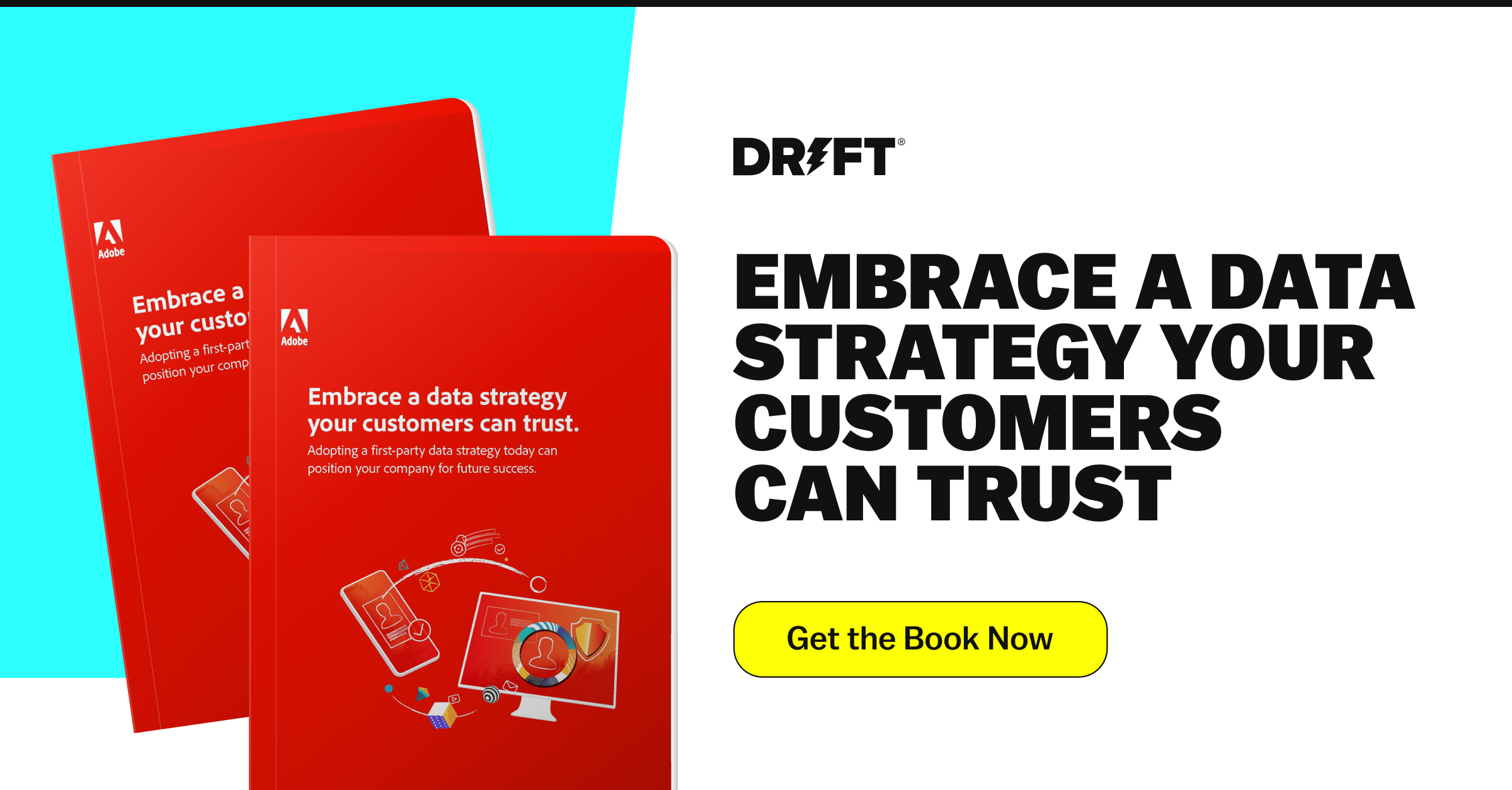Today’s marketers are at a crossroads.
Third-party cookies were once seen as essential for offering personalized buying experiences. Soon, they’ll go the way of pop-up ads and spam — into the dustbin of online marketing history.
For a while, consumer demand for increased digital privacy has put pressure on browser makers to phase out third-party cookies. Now, Google (who owns 64% of the browser market) plans to usher in the cookiepocalypse by the end of 2024.
But that doesn’t mean consumers don’t want personalization. In fact, since 2020, buyer expectations for quick, personalized experiences have grown by 26%.
What this means is that we can no longer rely on third-party cookies to engage potential buyers through retargeted ads. Instead, we need to focus on providing meaningful experiences on our websites to build trust with buyers.
And that’s where Conversational Marketing comes in.
Here’s how it works 👇
We originally spoke about Conversational Marketing and the cookieless world in a webinar. If you want to watch the full recording, click here. Otherwise, keep reading for all the insights 💡
How Does Conversational Marketing Work?
Conversational Marketing uses real-time conversations with site visitors to answer questions and deliver resources quickly, while also working to nurture buyers along the buying journey.
Conversational Marketing isn’t simply a replacement for third-party data. It allows businesses to talk with buyers in real-time while capturing first-party data and delivering the personalized experience that buyers desire.
The best part? Drift Conversational Marketing does not depend on third-party cookies to gain visitor intelligence. We exclusively use first-party cookies to track return visitors and to better understand their needs and interests.
At Drift, we do this using the three-step Conversational Framework. Here’s a breakdown of each stage of the conversation:
1. Engage
The first step is all about recognizing and engaging your buyers when their intent is highest. For example, using a Drift chatbot, you can send a customized message that provides relevant information to someone on your pricing page:

For an extra layer of personalization, you can tailor your hook using information from Drift Intel — like company name, industry, employee count, etc. Not only does this make visitors more likely to engage, but it also saves time as you’re not asking a bunch of qualifying questions.
This is also the perfect time to learn more about your buyer — and in a way that feels authentic. Using chatbots or live chat, you can dive deeper into the site visitor’s interests, pain points, and the product features they care most about.
2. Understand
A skilled sales rep listens and asks specific questions so they can better understand what the buyer is looking for. But this is a process that can take days.
With Conversational Marketing, you can understand what your buyer is looking for in a matter of seconds.
Conversational AI doesn’t only respond to site visitors as any other chatbot would. They also allow buyers to get straight to the point without needing to click through chat buttons. Plus, the AI can draw on the buyer’s previous interactions with you to formulate specific questions and deliver tailored resources.

Of course, human reps are not left out of the equation. With routing, sales reps will be notified and given the opportunity to jump in when their target accounts are online and expressing high intent.
3. Recommend
Once you understand what the site visitor is looking for, it’s time to recommend the next step. For example, if a visitor asks a support question, you want your chatbot to link them to a help page or route them to a support agent.
This step is all about establishing trust. The more helpful the recommendation, the more likely your buyer will be to trust you and build a lasting relationship with you. In short, personalized, relevant recommendations can turn prospects into lifelong customers.
As a marketer, you control these recommendations. So it’s important to use the insights you have collected to test your playbooks and iterate on your conversational strategy.
How Drift Helps Drive Personalization in the Cookieless World
Now that you know how Conversational Marketing works, you’re probably wondering: How exactly does this help you tackle the cookieless world?
Ultimately, it comes down to having better conversations.
In Conversational Marketing, every conversation is an opportunity to collect valuable first-party data which can be incorporated into future buyer interactions. You can use the intelligence from previous conversations to better tailor your message to a specific audience.

And with Drift’s native integrations, it’s easy to share your conversational data across your tech stack to enhance your campaigns, nurture emails, and more.
Like any other solution in your tech stack, your Conversational Marketing tool should be driving revenue. Drift Reporting allows you to track your ROI through key metrics and helps you optimize your conversational strategies to get the biggest payoff.

Finally, if you’re looking to strengthen your relationship with sales, Drift might just be the secret weapon you need. With access to in-depth insights into prospective buyers, your sales team will be able to have more meaningful conversations and level up their outbound messaging.
Winning in the Cookieless Future Is All About Building Trust
In a sense, the demise of third-party cookies shouldn’t matter all that much to the modern marketer.
Digital marketing has always been about delivering the experiences customers need and want — and today’s buyers clearly expect a quick, personalized, and relevant experience.
What this means is that the most successful brands will be those that prioritize understanding their buyers and building trust. So, start listening to your buyers with Conversational Marketing and give them the personalized experience that they deserve.









